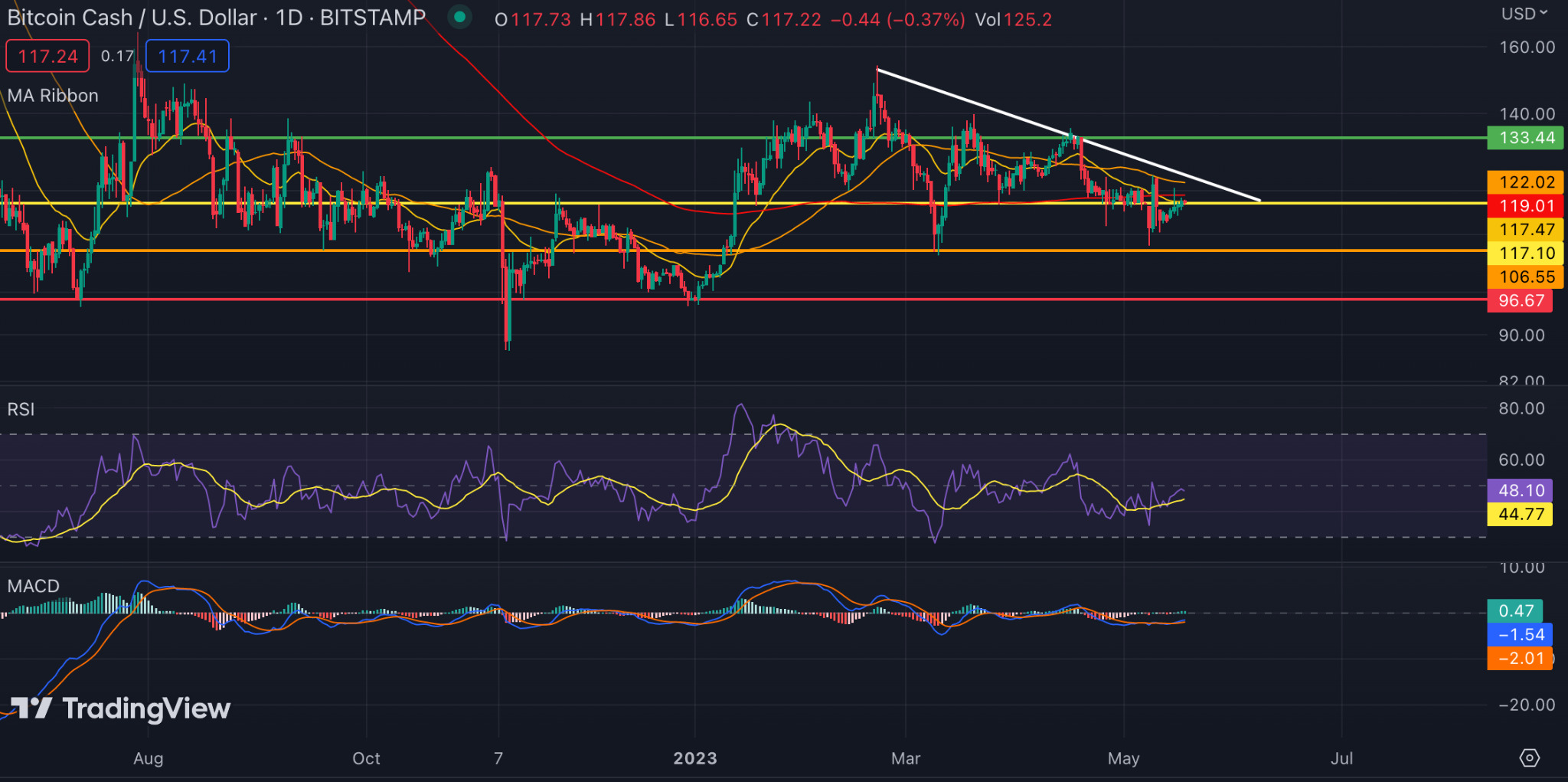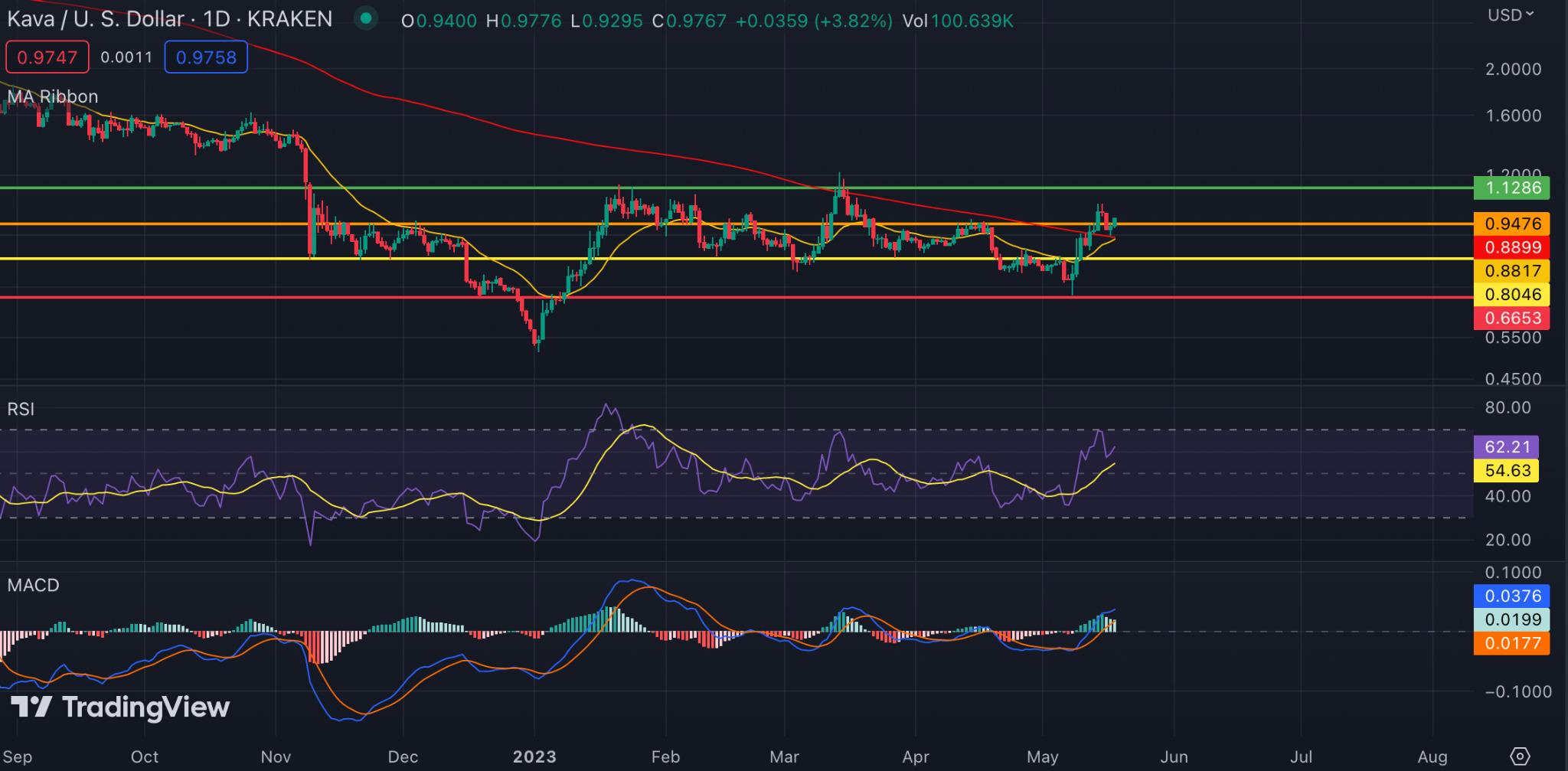In this week’s crypto highlights, we explore the price movements of BTC, BCH, OP, and KAVA. Additionally, this recap includes other notable industry news items that occurred over the last seven days. Without further ado, let’s dive into the latest market developments.
Noteworthy market events
Ledger faced backlash after introducing Recover feature
Let’s start with one of the largest crypto dramas over the last few days. Ledger, a top cold wallet manufacturer, released a firmware update that includes a feature called “Recover.” This is an “optional” ID-based service that backs up users’ seed phrases for a subscription fee. Ledger claims that the service is safe and secure, as the recovery phrase is held in an encrypted form, and split up for storage by three parties. They include Ledger, crypto custody firm Coincover, and code escrow company EscrowTech.
After the feature introduction, some crypto enthusiasts called it “one of the dumbest business moves of the year,” stated that Ledger ended its own life, and started treating it as a “hot wallet” provider. The update inspired some established Ledger users to look for alternatives. Trezor, and other cold wallet providers, took advantage of it, and started offering discounts on its devices, slightly mocking Ledger.
The Ledger community, and some crypto experts, criticized the service, arguing that it undermines the core principle of self-custody. The community highlights that this feature allows the transmission of the user’s seed phrase to the Internet, regardless of whether it is activated on the user side or not. This creates major security issues, and makes the three above-mentioned companies a potential subject to hackers and government pressure.
The update was included in Ledger Nano X firmware version 2.2.1, which now has been completely removed from Ledger’s website, although the latest firmware updates page still states that v2.2.1 is the latest version for Ledger Nano X device.
BlockFi customers oppose the company’s restructuring plan
It takes two to tango, so Ledger is not the only drama of the week. BlockFi posted a series of tweets, dedicated to its disclosure statement with the U.S. bankruptcy court. The company claimed that recovery from FTX and Alameda would be the largest driver for customers to regain their funds.
How did users react? They asked the court to put BlockFi’s assets into the hands of new management. The creditors labeled BlockFi’s position that it was a victim of FTX and Alameda a “false case narrative.” They blamed the firm’s failure on poor management decisions, and subsequently, its restructuring agents.
The creditors committee pointed out that in the days after the FTX collapse, BlockFi converted around $240 million in crypto into fiat, resulting in significant financial losses, and potential tax issues for customers. In addition, BlockFi deposited the proceeds, and an additional $10 million into Silicon Valley Bank (SVB), which later collapsed. Furthermore, the filing mentioned BlockFi founder and CEO Zac Prince, accusing him of cashing out $10 million in the preference period.
U.S. SEC responded to Coinbase’s request for regulatory clarity
After weeks of waiting, the U.S. Securities and Exchange Commission (SEC) answered Coinbase on its petition, telling an appeals court that the platform hadn’t proven the regulator needs to create a new regulatory framework for the digital asset industry. In its response, the SEC alleged Coinbase has no right to mandamus, which orders a government agency to fulfill certain duties.
Paul Grewal, Coinbase’s Chief Legal Officer, expressed his disappointment with the SEC’s response, stating the agency admitted that it would rely on enforcement actions instead of rulemaking for the foreseeable future.
It’s noteworthy that shortly before this event, the U.S. Chamber of Commerce filed a brief in support of Coinbase, in which it criticized the SEC for its lack of clarity and consistency in regulating digital assets. It argued that the SEC’s actions could stifle innovation and growth in the sector.
MakerDAO released the Endgame roadmap
According to Endgame overview (not related to Avengers), the decentralized finance (DeFi) platform MakerDAO plans to introduce AI tools that will form the basis for creating a new blockchain, closely related to Ethereum. The beta version will appear in the next few months.
The first step within Endgame will be to create a unified brand for the ecosystem, which could lead to a potential rebranding of DAI stablecoin, and MKR utility token. In the second phase, six subDAOs will be launched to eliminate and delegate the costs and complexities associated with day-to-day operations.
In the third stage, developers will integrate AI tools for monitoring and improving management, while the fourth stage is dedicated to launching a governance participation incentive program. In the final, fifth stage, a new blockchain will be introduced. Its current name is New Chain.
One sentence news
- According to a draft bill, the European Union could force companies associated with digital assets to provide tax authorities with information about the balances of their customers.
- Amid the BRC-20 hype in the Bitcoin network, LTC-20 and DRC-20 tokens, which follow the same setup, appeared on the Litecoin and Dogecoin networks respectively.
- The Ethereum Beacon Chain went down twice over the week, failing to reach finality for 25 minutes, and over an hour in separate incidents. However, this issue was rapidly fixed.
- Lido Finance developers deployed the second version of its protocol, adding stkETH redemption and staking withdrawals for ETH.
Bitcoin tested the two-month low
This week the BTC price became a diver that was trying to grasp a support level. The culmination of this exploration was the asset drop to $26,000, last seen in March 2023. But after testing it, the price bounced off, and experienced another slight correction.
One of the catalysts behind recent choppy price movements could be general liquidity issues in crypto markets. According to Kaiko, Bitcoin liquidity has already fallen by almost 50% in 2023, especially on U.S. exchanges. A certain part of this drop could be related to Jane Street Group and Jump Crypto — two of the world’s top market-making firms — which reduced some of their crypto exposure in the U.S. due to regulatory uncertainty.
Over the last month, Bitcoin liquidity dropped by almost 4%, while altcoins tumbled by 17%. There were reports that liquidity on both sides of the BTC price is so thin, whales are more likely to consider breaking up their orders into smaller sizes, to minimize slippage.
Decreased liquidity typically leads to increased volatility. On average, the BTC price moved up or down by $10, every 10 minutes in December 2022, while it moved by an average of $34 from March 1 to May 11.

Due to the price decrease, Bitcoin tested the 200-week SMA, which acted as a major support level during previous cycles. Although weekly RSI remains in positive territory, which could potentially support price recovery, MACD lines are on the verge of a bearish crossover.
The following price movement could depend on whether or not the asset manages to sustain above the 200-week SMA.

In addition, Bitcoin completed an ABC pattern similar to the one the asset experienced in March 2023, reaching the 0.382 Fibonacci point. Two months ago, MACD had also formed a bearish divergence, and just crossed the zero line. Daily RSI was also in negative territory. This suggests that the following price movement could be similar.
So if the price drops below the 0.382 Fibonacci point, this could continue driving it down to the 0.618 Fibonacci level. However, the 0.5 Fibonacci point could act as immediate support, as it corresponds to the previous major resistance area.
To invalidate this bearish view, the asset may need to move above the previous high, or $30,000.
BCH is moving choppy near the major resistance area

On May 15, Bitcoin Cash (BCH) developers deployed the CashTokens update, which allows the community to create digital assets within the network. Users are now able to create fungible and non-fungible tokens, as well as DeFi applications based on Bitcoin Cash. The update also introduced smart contracts within the Bitcoin Cash network, which are comparable to those on the Ethereum network.
The BCH price jumped almost 5% in an hour, after the network update. But the next day, the asset lost all its daily gains. The daily chart shows both bullish and bearish signs. The BCH price is moving inside a downtrend (white line), RSI is neutral, and the 20-day EMA is looking downward. This suggests that the path of least resistance could be a downside. However, MACD shows a slight bullish divergence, which may support upward momentum.
The following price movement could depend on whether or not the asset reclaims the $117 area. If successful, this could drive the price to the descending resistance line. If failed, the following price target could be near $106.
OP is preparing to the Bedrock update

On May 15, the Optimism team announced that a major Bedrock update will take place on June 6. This announcement was one of the catalysts behind the OP price jump from the $1.59 level. In addition, shortly before this event, RSI formed a strong bullish divergence on lower timeframes, indicating that an upward movement may follow. The daily chart shows bullish signs as well, including a rebound from the overbought level, and a positive crossover of MACD lines.
At the moment of this writing, the asset approached the $1.85 resistance area, where the 20-day EMA and 200-day SMA are located. If the asset breaks this level, this could push the asset to $2.16. If failed, this may reestablish a bearish movement, moving the price back to $1.59.
The KAVA price surged ahead of the mainnet upgrade

Kava temporarily became one of the top performers among the top 100 digital assets by market cap, experiencing a weekly price increase of over 30% before the Kava 13 mainnet upgrade.
The network will launch a new bridge that facilitates the transfers from Cosmos to protocols across Kava. In addition, the update is also dedicated to speeding up transactions, and offering greater security.
But shortly before Kava 13 went live, the asset experienced a slight correction. Arguably, this is because it reached the overbought zone on a daily chart. However, the price managed to bounce off the 200-day SMA, which could act as a bullish sign. MACD and RSI remain in positive territory, which may help the price sustain above the $0.94 area.
Tune in next week, and every week, for the latest CEX.IO crypto highlights. For more information, head over to the Exchange to check current prices, or stop by CEX.IO University to continue expanding your crypto knowledge.
Note: Exchange Plus is currently not available in the U.S. Check the list of supported jurisdictions here.
Disclaimer: For information purposes only. Not investment or financial advice. Seek professional advice. Digital assets involve risk. Do your own research.
